It’s winter as I write this and it won’t be long now before the Dragonflies and Damselflies start appearing.
They are a good indicator of the health of our creeks, dams and other waterways around the Moggill Creek Catchment.
There are a few species that breed in rather polluted water, but most species in the Catchment prefer water that is fertile enough that it supports the worms and insects that the larvae feed on, but clean enough that there is plenty of oxygen.
The adults will hatch out from early Spring to late Summer. It’s the adults that you will see flying around, often even quite a long way from the water. I see large numbers up our hill early in the morning, sitting on the tops of the grass stalks or on the Lantana, drying off the dew on their wings in the early morning sun.
As the day warms they then patrol the grasses and shrubs catching small moths, midges and, hopefully, any mozzies to fuel up before they return to Gold Creek to mate. Individual males patrol their own patch of creek and defend it with interesting aerial dogfights. Some pairs, especially of Damselflies, go about laying eggs in tandem flight.
The eggs of both Dragonflies and Damselflies hatch into voracious ugly nymphs that eat worms, aquatic insects, tadpoles and even small fish and may take from a few months to three years to emerge as the beautiful Dragonfly we see. Damselflies are reasonably similar in behaviour, but quite a bit smaller.
Dragonfly larvae are a most important food source for creek life. They are eaten by everything from platypus and water rats to water dragons, eels, fish and wading birds. They are a hugely important natural food for Trout and fresh water Bass.
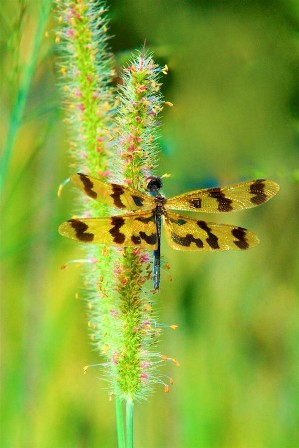 |
Graphic Flutterer |
| Pale Hunter | 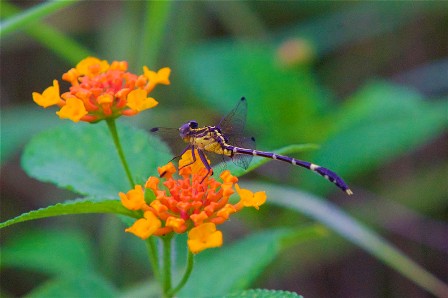 |
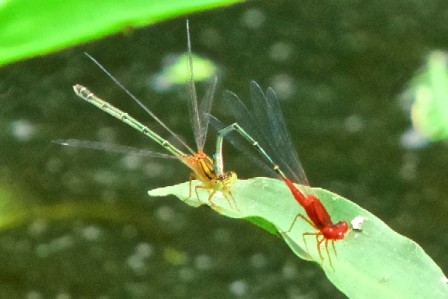 |
Red and Blue Damselfly |
| Scarlet Percher | 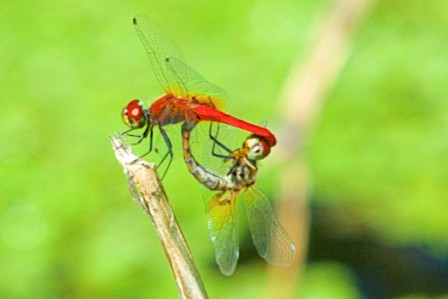 |
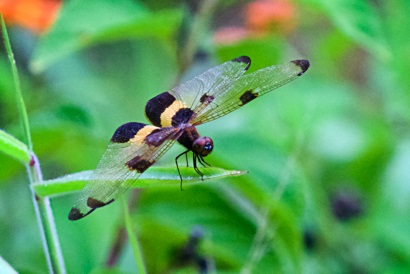 |
Yellow-Striped Flutterer |
All images supplied by Ed

